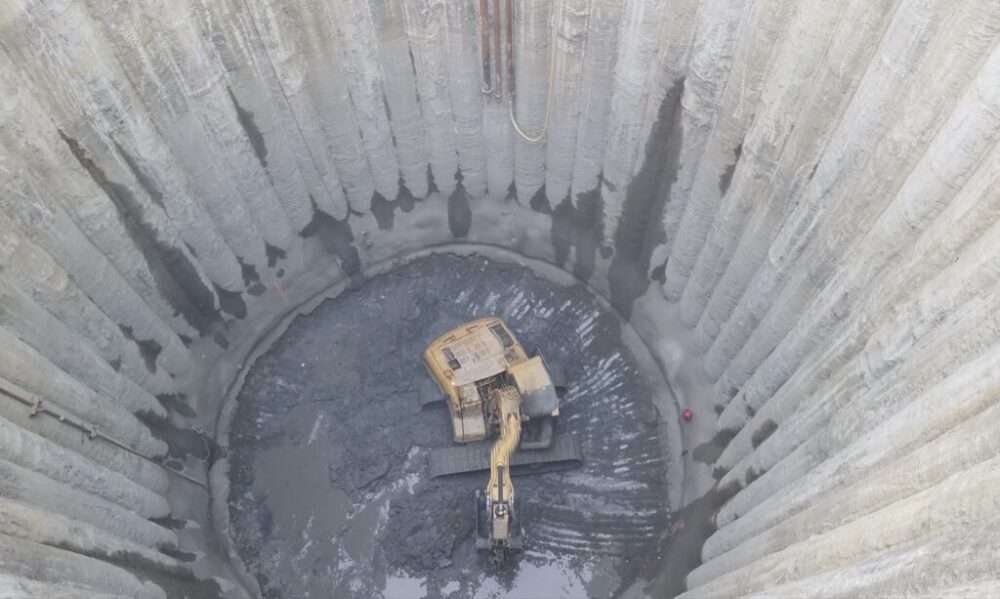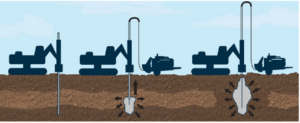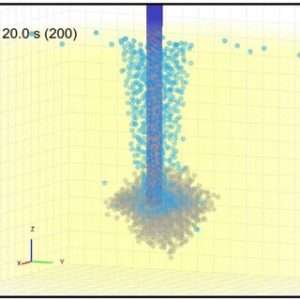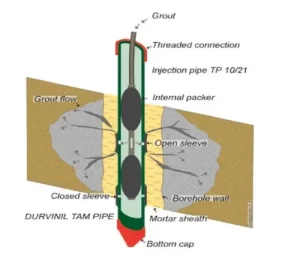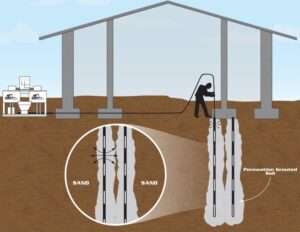In construction projects that involve deep excavations, managing groundwater is a critical challenge. Uncontrolled water infiltration can undermine structural integrity, delay construction schedules, and increase costs. Secant piling has emerged as an effective method for groundwater control in these scenarios, offering both structural support and water resistance. This article explores what secant piles are, how they work, and why they are the ultimate solution for managing groundwater in deep excavation projects.
What Are Secant Piles?
Secant piles are a type of foundation element used to create a continuous, reinforced concrete wall that can effectively control groundwater and provide stability during excavation. The term “secant” refers to the interlocking nature of the piles, which are installed in a specific sequence.
Secant piles are typically constructed by drilling overlapping holes into the ground, with the first set of piles (called primary or “hard” piles) forming the initial wall. A second set of piles (secondary or “soft” piles) is drilled in between the primary piles, creating a continuous barrier. The overlapping of the piles, combined with the high-strength concrete used in their construction, makes secant piles an ideal solution for preventing water ingress and providing excavation stability.
How Secant Piles Control Groundwater
Secant piles are primarily used for two purposes in deep excavation projects:
1. Waterproofing and Groundwater Containment
The continuous wall formed by secant piles acts as a barrier to groundwater. This is crucial in areas with high water tables or where the excavation reaches below the natural water level. The interlocking design prevents water from seeping into the excavation site, creating a dry working environment for further construction.
Waterproofing Capabilities: The overlapping nature of secant piles makes them highly effective at resisting water ingress. The primary piles, which are often made of stronger concrete, provide the bulk of the water resistance, while the secondary piles fill the gaps and create a more complete barrier.
Grouting and Sealing: In addition to the overlapping piles, grout is sometimes injected into the gaps between the piles to enhance the waterproofing capability. This can be especially useful in areas with excessive groundwater flow.
2. Soil Stabilization
In deep excavations, especially in urban areas, it’s essential to stabilize the surrounding soil to prevent collapse or displacement. Secant piles act as retaining walls, preventing soil movement and supporting the walls of the excavation. They are particularly useful in unstable or loose soils that may otherwise pose a risk to the structure being built.
- Excavation Support: The secant pile wall provides lateral support, preventing the sides of the excavation from collapsing during digging.
- Stabilizing Soft or Cohesive Soils: In areas with soft or unconsolidated soils, secant piles help distribute the forces acting on the walls and ensure the excavation remains stable.
Advantages of Secant Piles
Secant piles offer numerous benefits in groundwater control and deep excavation support, making them an essential tool in foundation engineering:
1. Effective Groundwater Control
Secant piles provide an efficient method for controlling groundwater, especially in projects involving deep basements or tunnels. By forming a continuous barrier, they significantly reduce the risk of water ingress, which can otherwise slow down or halt construction.
2. High Load-Bearing Capacity
Secant piles are designed to bear substantial loads, making them ideal for projects that require a strong foundation or lateral support, such as multi-story buildings, bridges, and underground structures.
3. Reduced Excavation Risk
Secant piles stabilize the surrounding soil, reducing the risk of excavation collapse. This makes them particularly useful in sites with difficult or unstable soils where conventional methods might not provide adequate safety.
4. Minimal Disruption
Unlike other dewatering methods, such as pumping or sheet piling, secant piles are installed with minimal disruption to the surrounding area. This makes them suitable for construction sites in urban or densely populated locations, where noise, vibration, and disturbance need to be minimized.
5. Adaptability to Various Ground Conditions
Secant piles can be adapted to a wide range of ground conditions, including soft soils, loose sands, and high-water-table areas. Their ability to penetrate various types of soil and form a continuous barrier makes them a versatile solution for complex excavation environments.
6. Permanent Water Containment Solution
Secant piles provide a permanent solution for groundwater control, eliminating the need for temporary dewatering systems that may be costly and inefficient in the long run. Once installed, secant piles offer lasting protection against groundwater issues.
Applications of Secant Piles
Secant piles are widely used in construction projects where groundwater management and soil stabilization are critical. Common applications include:
1. Deep Excavations
Secant piles are ideal for deep excavations, such as those for basements, underground parking structures, and tunnels. They help ensure that the excavation remains dry and stable, allowing work to continue safely and without delays.
2. Waterfront and Marine Construction
In projects near rivers, lakes, or coastal areas, secant piles are used to prevent water ingress from tides, storm surges, or groundwater. They are commonly employed in constructing quay walls, docks, and other waterfront infrastructure.
3. Foundation Support for High-Rise Buildings
High-rise buildings often require deep foundations that can resist both vertical and lateral forces. Secant piles provide the necessary structural support and groundwater control, allowing the building’s foundation to be securely anchored.
4. Slope Stabilization
Secant piles can also be used in slope stabilization projects to prevent landslides or soil erosion. By creating a solid barrier, they help hold the soil in place and prevent collapse during construction or after the project is completed.
Challenges and Considerations
While secant piles offer many advantages, there are some challenges and considerations to keep in mind:
1. Cost
The installation of secant piles can be more expensive than other groundwater control methods, particularly if deep piling or extensive grouting is required. However, their long-term benefits often outweigh the initial costs.
2. Installation Time
Secant pile installation can take time, especially when working with very hard or dense soils. Additionally, the installation process involves multiple stages (primary and secondary piles), which can increase the overall project timeline.
3. Complexity in Design
The design and construction of secant piles require careful planning and expertise to ensure the proper overlap, grouting, and reinforcement. Inadequate design can compromise the system’s water-resisting and load-bearing capabilities.
Conclusion
Secant piles offer an ultimate solution for managing groundwater in deep excavation projects. Their ability to form a continuous, watertight barrier combined with their structural support makes them ideal for challenging construction environments. Whether it’s controlling groundwater in a high-water-table area or stabilizing soft soils during excavation, secant piles provide long-term stability, safety, and efficiency.


